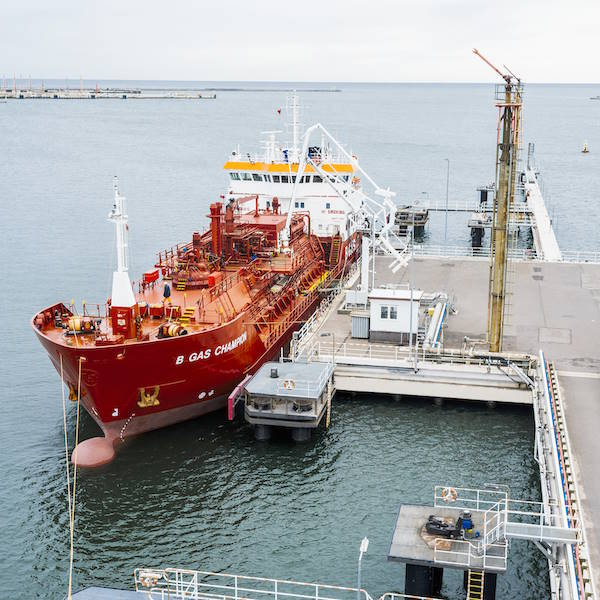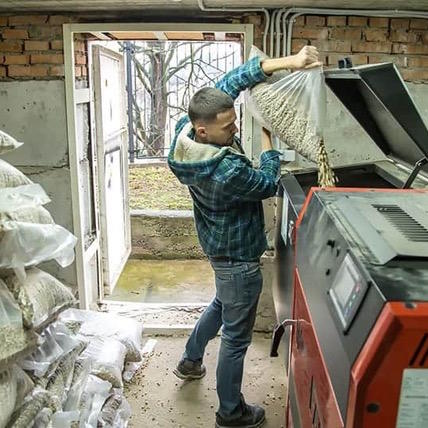Railway accident at LPG terminal
6.7.2023
Modern LPG transshipment terminals have in their resources infrastructure that allows for the implementation of many tasks related to gas distribution. The complexity of the implemented activities requires constant training and good cooperation between the management of the terminal, its employees and entities and subcontractors performing services related to the transport of LPG. The need for continuous improvement of procedures is illustrated by an incident that occurred in one of the national terminals in the first half of 2023.
DESCRIPTION OF THE EVENT
The following analysis concerns a railway accident that occurred at one of the Polish LPG transshipment terminals. The incident that occurred on the railway siding of the terminal involved the derailment of a railway tanker used to transport gas. No one from the Terminal Owner/Siding Manager took part in the incident. On the part of the Railway Operator, a Setter acting as a maneuver manager participated in it. The task of the railway operator was to take 3 empty wagons with LPG. The carrier managed a line-up of 6 wagons. The cars were to be connected to each other and then taken away. Upon entering the terminal, the manager of the railway manoeuvres on the part of the carrier was informed by the passageway about the layout of the station to which the wagons were to be attached, the safeguards in the form of rubber wedges applied and the available infrastructure, as shown in the diagram below.

After accepting the guidelines from the passageway, the maneuver began the procedure for setting the composition of the wagons. During the maneuvers, during the journey of the locomotive with the wagons, it entered between the two extreme wagons of the depots. Then there was a collision of the approaching composition against a standing composition secured by rubber wedges, which caused it to overrun the rubber wedge and derail the first of the wagons.
ANALYSIS OF THE EVENT
The incident was reported to the State Railway Accident Investigation Commission. The Terminal Owner/Siding Manager appointed a commission (legal requirement) to clarify the cause of the railway accident on the basis of the material collected, which made it possible to formulate the following conclusions. The Commission found that the immediate cause of the incident was the car running over a rubber wedge, the wheel climbing onto the rubber wedge, partially crushing the wedge foot and moving the car off the rail along with the wedge. The result of this event was the derailment of a standing set of railway tankers.
The Commission concluded that the original reason for the derailment of the car was to be secured by wedges without the use of a handbrake. Also of no small importance to the course of the event was the improperly implemented procedure for the movement of the wagons, coordinated by the manager of the maneuvers. He did not correctly determine the distance between the trains because he was standing in a place (between the wagons) from which it is not possible to make a real estimate of the distance. In addition, the maneuver manager did not verify the method of securing the standing group of wagons (he did not remove the rubber wedge from under the wheel of the wagon), which is his duty before the start of maneuvering work.
Particular attention should be paid to the entry of the manager of maneuvers between the two wagons before the combination of the depots; it posed a direct threat to life and health. Such behaviour is contrary to the current procedures for conducting railway manoeuvres.
CONCLUSIONS
The event described above did not contribute to the emergence of further dangerous situations, no one was harmed or injured as a result. The Terminal Owner/Siding Manager and the Railway Operator jointly took steps to clarify the causes of the incident and implement procedures to avoid similar errors in the future. We present the following conclusions in order to disseminate good practice, because the safety of the LPG industry is one of the priorities of POGP's activities, and the system of exchange of experience between participants in this sector is one of the pillars on which we build this safety together.
Based on the analysis of the described incident, the following conclusions were drawn:
- The railway operator removed the manoeuvring manager from immediate activities and referred him to refresher training;
- Both parties to the incident, i.e. the Terminal Owner/Siding Manager as well as the Railway Operator discussed the incident at periodic briefings for railway personnel;
- The railway operator shall issue an internal information bulletin;
- The railway operator will send a letter to the President of the UTK to take a position on the use of rubber wedges;
- Changed the internal procedure of the railway siding of the Terminal Owner/Siding Manager facility with rules for the use of rubber wedges;
- The employees of the Terminal were informed about the incident, presenting them with the course of the event and the findings of the commission investigating the railway accident;
- Information about the event of an industry organization — Polish Liquefied Gas Organization is presented in order to raise awareness and prevent similar events from occurring in the future.




